|
|
|
|
Plesetsk: Click with the right mouse (PC) or control click (Mac) on the map to invoke the interactive menu. |
 |
|||||||
|
HISTORY
|
|||||||||
|
|
MISSILE BASE: The origin of Plesetsk facility The Cold War entered a new phase in 1957, when, for the first time, the USSR could target the US territory with nuclear-tipped missiles. As Soviet designers were still testing the R-7 missile in Tyuratam, the military had already started looking for places to deploy the new weapon. The shortest path for missile attack against the North American continent extended across the Arctic Ocean. It was clear that the launch pads had to be placed as far north as possible for the maximum use of the missiles' flight range. At the same time, the future launch sites had to be accessible by railroad, (the only way of transporting R-7 stages), while being remote enough to maintain maximum secrecy. A search team of the Ministry of Defense chose the village of Plesetsk in Archangel Region, 800 kilometers north of Moscow (62.8° Northern latitude, 40.1° Eastern magnitude) as the location of the first operational base for the R-7 missile. |
||||||||
|
BUILDING THE FOUNDATION: Early years of the Plesetsk missile base The first military construction crews arrived at Plesetskaya railroad station in February 1957. They were met by a blizzard harsh even for Northern Russia and by the cold reaching minus 45 C°. In the meantime, on July 4, 1957, in the town of Bolshevo near Moscow, new military unit to be deployed in Plesetsk was officially formed. The veteran of the Soviet missile forces, Colonel Mikhail Grigoriev was officially appointed the commander of the unit on July 10. Five days later, Grigoriev issued his first order, detailing temporary structure of the new division: the command group, the division of construction and service groups - total 32 officers and 120 soldiers and sergeants. In September 1957, Grigoriev and his officers arrived in Plesetsk, where they lived in five railroad cars until May 1958. |
|||||||||
 |
UNCOVERING THE MYSTERY: Secrecy around Plesetsk At the beginning of 1960, the US intelligence has already put Plesetsk high up on the list of suspected ICBM sites. Francis Gary Powers' reconnaissance flight on May 1, 1960, which resulted in the famous U-2 incident, had both Tyuratam and Plesetsk among its primary surveillance targets. In August 1960, after numerous previous failures, the Corona spacecraft, delivered first photos of the Plesetsk area. Despite low quality, they did reveal railway lines not found on the German military maps from the World War II era - the best reference on the Soviet geography US intelligence had at the time. |
||||||||
 |
ON ALERT: R-7 ICBM in operation In December 1959, a government commission officially declared the first launch pad in Plesetsk for the R-7 missiles operational. Within days after the completion of the Plesetsk launch complex, on December 17, 1959, the Soviet government created Strategic Missile Forces, RVSN, within the Soviet Army. On July 15, 1961, two additional R-7 launch pads at Site 3 in Plesetsk were commissioned. The 70th battlefield station deployed at Site 43 serviced the new facilities. Various processing improvements in Plesetsk allowed reducing the time necessary to prepare R-7 for launch down to seven or eight hours, as oppose to 12-16 hours needed to launch the same missiles from any of two pads in Tyuratam. |
||||||||
|
|
NEW GENERATION: R-16 and R-9 ICBMs In August 1960, the construction of the two surface pads for the R-16 missile started in Plesetsk. The new unit trained to serve the R-16 missiles arrived in Plesetsk on June 13, 1961. At the same time, three silos for R-16U missile were under construction in Plesetsk. Next, the R-9 ICBMs were also deployed in Plesetsk. In May 1962, General Major Stepan Shtanko replaced Grigoriev as a commander of the Plesetsk base. In his tenure, the site played a key role in the nuclear confrontation with the U.S. over the Soviet missiles placed on Cuba. At 1 p.m. September 11, 1962, as the events around Cuba were unfolding, the Plesetsk base was put on high alert. A curfew was implemented in the residential areas and lights had to be turned off after dusk. Powerful sirens installed in town and barracks played regularly, calling officers to their positions, who could only wonder if it was "real" this time. |
||||||||
 |
NEW ROLE: Creation of a test range in Plesetsk At the beginning of 1962, General Galaktion Alpaidze was assigned by the Ministry of Defense to lead a team of experts searching for a new site, which could be used for two major projects: to test solid-fueled ballistic missiles and to provide access to high-inclination orbits for space launches. In December 1962, after intensive search from the air and from the ground, Alpaidze proposed two potential sites. The Ministry of Defense approved the site near the town of Velsk, which is about 300 km southeast of Plesetsk. At the same time, during 1963, Sergei Korolev, head of OKB-1 design bureau, reportedly insisted on using existing infrastructure in Plesetsk instead of developing a new site. Korolev volunteered to prepare an official proposal on the subject for Sergei Zverev, the Minister of Defense Industry, who later approved the idea. On September 16, 1963, Soviet of Ministers USSR issued a resolution, approving a merger of the future test range and the existing ICBM base in Plesetsk. |
||||||||
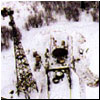 |
FIRST MISSILE TESTS: RT-2 ICBM Three silos for solid-fueled RT-2 ICBM became the first test facilities built in Plesetsk. A special test unit commanded Lt. Colonel Yuri Yashin was formed at the site on February 25, 1965. By October 3, 1968, 25 launches of RT-2 ICBM had been conducted from the range. On April 29, 1969, the new automated control system was used to launch RT-2 after the signal from the command center of the Strategic Missile Forces. With the completion of the initial test program, the RT-2 missiles were deployed in Plesetsk in seven new silos for "operational testing." Total 142 RT-2 missiles would eventually fly from Plesetsk. Between January 16, 1970 and January 1972, Plesetsk also hosted 51 launches of a modified RT-2P missile. |
||||||||
 |
INTO SPACE: End of Plesetsk mystery On March 17, 1966, the Plesetsk launched its first satellite, announced as Kosmos-112, carried aloft by the Vostok-2 booster. The spacecraft belonged to the first-generation of the Zenit spysat, previously launched from Tyuratam. On April 6, the second-generation Zenit (Kosmos-114) blasted off from Plesetsk onboard the Voskhod booster. The higher than usual inclination of these two spacecraft -- 73 degrees -- was noticed by a group of students led by Geoffery Perry, physics teacher in Kettering school, England. The group has been monitoring trajectories and analyzing radio signals from the satellites. The closer evaluation of the satellites' ground tracks suggested that they originated in Northwestern Russia. Kettering group had to wait until October 14, when Kosmos-129 was launched, to get an additional ground track and pinpoint exactly where all three missions had originated. On November 3, 1966, the discovery was officially announced and since then Plesetsk has been known publicly in the West. Yet, the Soviet Union did not acknowledge the existence of the launch site in Plesetsk until 1983. |
||||||||
| NEW
SPACE LAUNCHER: Kosmos-3
Around 1965, the construction of the launch complex for an R-12-based launcher has started south of original R-7 pads. The Raduga (No. 133) facility was used for the first time on March 16, 1967 to launch a new version of the R-12-based booster designated 11K63 (Kosmos-2). On May 15, 1967, the Kosmos-3M launcher also started flying from Plesetsk. The Rockot booster had been flying from th same site since 2000. |
|||||||||
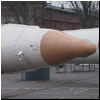 |
FIRST MOBILE MISSILE TESTS: RT-20 ICBM During 1968, Plesetsk became a testing ground for the early efforts to create mobile ICBMs. 12 launches of the RT-20 (SS-X-15) mobile system were conducted at the time. Reportedly, eight launches resulted in failures, after which the project was terminated. Testing of the new mobile ICBM "Temp-C" (also known as SS-16 and RS-14) started in Plesetsk on March 14, 1972 and it was conducted by a test unit led by Lt. Colonel N.V. Mazyarkin. By 1976, 35 launches were conducted in the course of the intensive test program. Although in 1974, Leonid Brezhnev during Vladivostok summit with President Ford promised not to deploy SS-16 missiles, U.S. satellite imagery later revealed what appeared to be up to 200 solid-fueled SS-16s deployed near Plesetsk under camouflage netting. |
||||||||
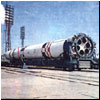 |
UNMANNED PAD: Tsyklon-3 launch complex In 1970, the construction of a highly-automated launch complex for Tsyklon-3 (11K68) booster started at Site 32. It was designed by Transmash Design bureau led by Chief Designer V.N. Soloviev. (VKS history p.169, 237) The complex includes two pads called "Left start" and "Right start." The first launch pad was conducted here on June 24, 1977, carrying Kosmos-921. |
||||||||
 |
A TRAGIC NIGHT: Kosmos disaster By 1973, the launcher known today as Kosmos-3M was in use in Plesetsk for about six years. According to a post-Soviet source, a routine launch was planned for 1:32 a.m. on June 26, 1973s. The preparation, however, run into trouble, when due to a sensor malfunction, the fuel tank was overfilled. The personnel drained part of the fuel and refueled the launcher. Apparently, at this point, the fuel tank developed a leak and 15 seconds before the liftoff, the launch sequence was automatically suspended. The launch was canceled and more than 40-member launch team tried to deactivate the vehicle. At 4:18 and 4:20 a.m. two crews of 13 people were dispatched to the launch pad. At 4:22 a.m., a dual explosion shook the complex, followed by the fire. Seven people were killed on the spot, 13 were injured, two of those later died in a hospital. No announcement about the tragedy was made at the time and its victims were buried in a mass grave in Mirny. A special memorial to the victims of the accident was dedicated in 1974. |
||||||||
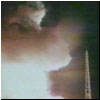 |
VOSTOK
DISASTER (1980)
On March 18, 1980, during the fueling of the Vostok-2M launcher with the Tselina satellite, while dozens of military technicians worked on the pad, a devastating explosion incinerated the rocket, killing 50 people. The victims of the tragedy were buried within limits of the town of Mirny, by the same memorial where nine people, who died in a 1973 Kosmos-3M explosion found their final resting place. The official investigation of the cause of the disaster essentially blamed the ground personnel for breaking fire safety rules. However, for years to come the official conclusion was doubted by people familiar with the matter. According to the post-Cold War Russian source, the results of investigation were proved wrong, when on June 23, 1981, a similar disaster was miraculously averted at the last second in Plesetsk. The new investigation pinpointed a valve, made of materials, which on contact with hydrogen peroxide could cause explosive chain reaction. Not until the end of the 1980's an outside world could learn about both accidents. |
||||||||
 |
MISSILE TRAINS: Railroad-based missiles From January 1982 to April 1985, the testing of the rail road-based RT-23 (RS-22) missile was conducted in Plesetsk. It was followed by the testing of modified RT-23 UTTKh system designed for both railroad and silo launchers. Railroad-based system was under testing between February 27, 1985 and December 22, 1987. For a silo based version, eight underground pads of two different types were constructed in Plesetsk along with fortified control bunker and modified measurement complex. Total 20 launches of the missile were conducted from Plesetsk between July 31, 1986 and September 23, 1988. |
||||||||
 |
PERESTROIKA:
Fall of USSR and post-Soviet developments (1990s)
Despite being in better politico-economic position than its Kazakh cousin, Plesetsk could not escape severe financial problems of the economic transfer in the 1990s. As of 1997, more than 1,500 spacecraft have been launched from the site. However, in the wake of the reduction in defense spending, space launches in Plesetsk fell from 47 in 1988 to 6 in 1996. The same year, V.P. Pronikov, director of Plesetsk Cosmodrome, complained in an interview that his personnel had been without pay for three months. The site also faced environmental problems in the areas of fall of booster stages, which had to be addressed. |
||||||||
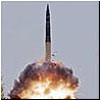 |
TOPOL: The latest generation The testing of strategic weapons also continued in Plesetsk at a slow rate in the 1990s. The new Topol-M (RS-12M2) ICBM was launched here for the first time on December 20, 1994. Two more launches were conducted in 1995 and 1996 and one more on July 8, 1997. The flight testing continued in the new century. |
||||||||
|
FACILITIES |
|||||||||
|
Launch facilities for R-7-based rockets Total four pads for R-7 missiles similar to those in Tyuratam were built in Plesetsk along the Yemtsa River, whose steep banks saved a great deal of digging efforts during the construction of the flame trenches. The first military unit to serve operational R-7A missiles was officially formed on May 19, 1958. The unit would be housed in barracks at Site 41, near yet-to-be-built launch complex at Site 1. The checkout and assembly of missiles stationed at pad No. 1 would be conducted at Site 142. |
|||||||||
|
Total three launch pads for the Kosmos-3-type booster existed in Plesetsk. It was encoded "Raduga" (Rainbow) and was designed specifically as a space launch facility by Central Design Bureau of Transport Machine Building and Central Design Institute of the Ministry of Defense. The complex needed an elaborate infrastructure to handle five types of propellant and three types of gases including nitrogen, helium and air heated up to 120°C, all used in a two-stage launcher. During 1990s one of three Cosmos pads at Site 133 was converted for the Rockot booster, which blasted off from Plesetsk for the first time in May 16, 2000. |
|||||||||
 |
Launch facilities for the Tsyklon-3 rocket In 1972, the construction of a highly-automated launch complex 11P868 for Tsyklon-3 (11K68) booster started at Site 32 in Plesetsk. The complex was designed by Department 8 from KBTM design bureau led by Department Chief V. N. Soloviev. It included two pads traditionally called "Left start" and "Right start." The first launch of the Tsyklon-3 rocket from the new facility took place on June 24, 1977, with Kosmos-921 onboard. |
||||||||
|
Zenit and Angara launch facilities The construction of the new launch complex for Zenit launch-vehicle has started in the 80's, however, the project was delayed by budget problems, becoming one of the "dolgostroi" (stalled construction) projects of the post-Soviet era. In 1993, a pair of Zenit pads intended for fast-paced military missions, were planned to be completed around 1996 or 1997, however, they remained unfinished as of 2001. In the second half of the 1990s, the plans to launch Zenit from the Plesetsk were dropped and the yet-to-be-built launch complex was "reoriented" for the Angara launch vehicle. |
|||||||||
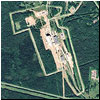 |
NEW, Oct. 12: Processing facility for Angara payloads (INSIDER CONTENT) The Russian military is finishing the construction of a multi-purpose spacecraft processing center at its launch site in Plesetsk, north of Moscow to prepare a diverse plethora of new-generation classified payloads heading into orbit. |
||||||||
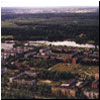 |
Town and support facilities
The main residential area of Plesetsk called Mirny ("Peaceful") is located northeast of the Plesetsk railway station. The first construction started here in the fall of 1957 and included mostly wooden barracks. |
||||||||
|
|
Ground control facilities Geographical location of Plesetsk did not allow the placement of two control stations -- the minimum required to support the launches of the early versions of the R-7 missile from Baikonur. As a result, the R-7's flight control system had to be upgraded to work with a single remote control site. When in 1963, Plesetsk received a status of a test range, a special Directorate of Measurement Means was formed to support the launches. The original network of ground control stations included five sites: Dobryanka (IP-1) and Kluchevoe (IP-2) (both in vicinity of Plesetsk) and remote sites in the town of Naryan Mar (IP-3) on the Island of Novaya Zemlya (IP-5) and town Zheleznodorozhny (IP-4). Later, the station in the town of Norilsk (IP-8), Mirny (IP-10) in the Republic of Sakha and Yakutsk (IP-9) were introduced. |
||||||||
|
|